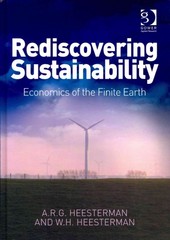Problem 1: Solow Model with Government Spending [40 marks] Consider the Solow model without technical progress studied in Lectures 1-2. Suppose that we extended this model by incorporating a government. Specifically, suppose that, in each period , the government taxes the representative household and uses the proceeds towards "unpro- ductive" government spending G. The level of public spending G, is "unproductive", in the sense that it does not affect the production function that the representative firm operates. In addition, assume that: . Government spending is a constant fraction of output: Gr = OY. where o E (0, 1), and Y, is total output in period t. . Households save a constant fraction of "private output", which is defined by Y? = Y, -G. More precisely, the aggregate level of savings is given by S, = s ( Y, -G.). with se (0, 1). . The economy is closed, so that the aggregate resource constraint is Y, = C,+1,+ Gr where C, is aggregate consumption, and I, denotes aggregate investment. . The representative firm operates the Cobb-Douglas Technology with a E (0, 1). . Capital depreciates at the rate o E (0, 1), and the population grows at the rate n > 0. Answer the following questions, based on this extended version of the Solow model. 1. Derive an equation that describes the evolution of capital per capita over time. 2. Solve analytically for the level of capital per capita at the steady state. How does capital at the steady state change with 0? Provide an intuition. PROBLEM SET 1 2 LECTURER: ANDRES BELLOFATTOTHE UNIVERSITY OF QUEENSLAND ECON3020 - ADVANCED MACROECONOMICS AUSTRALIA 3. Solve analytically for the levels output per capita, investment per capita, the real wage, and the interest rate in each period, as a function of the stock of capital per capita. 4. For now on, assume that the parameters in the model take the following values: . The capital share is a = 0.3. . The population growth rate is n = 0.01. . The depreciation rate is 6 = 0.1. . The savings rate is s = 0.2. . The government spends a fraction of output given by 0 = 0.15. Now answer the following questions using Excel: (a) Solve numerically for the steady state level of capital per capita in the model. (b) Suppose that the economy is initially in steady state for 10 periods, but afterwards the fraction of government expenditures increases permanently to 0 = 0.3. Simulate the impact of this shock on the level of capital, output, and investment per capita, as well as on the wage rate and on the interest rate. Explain your findings








